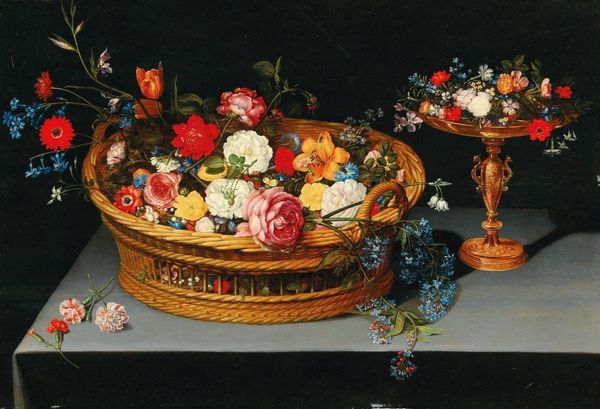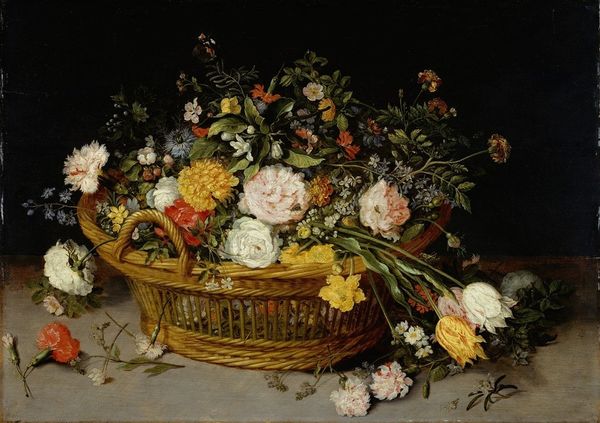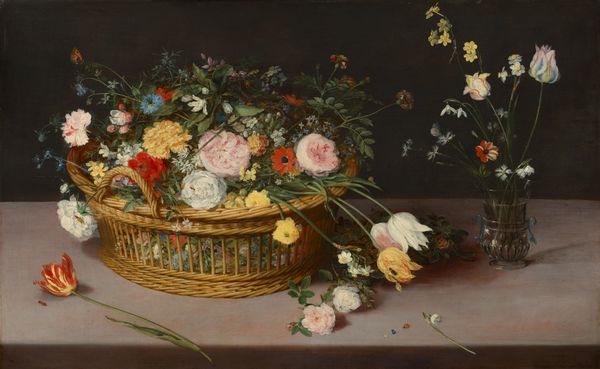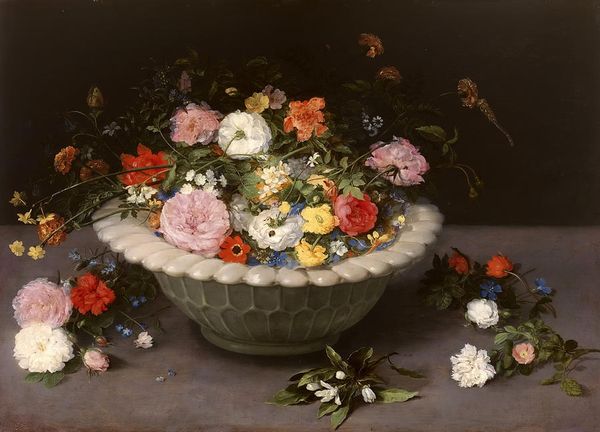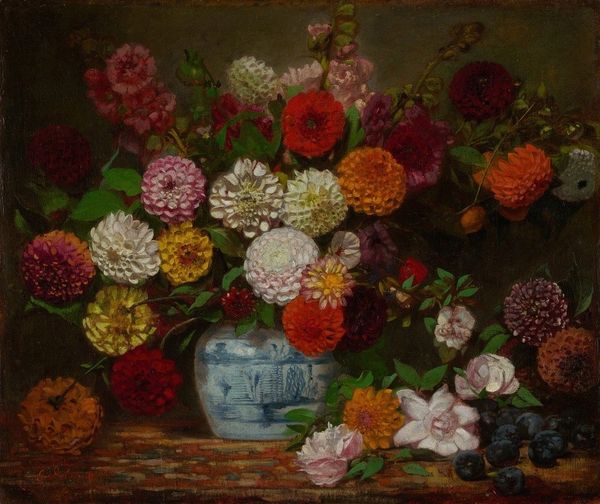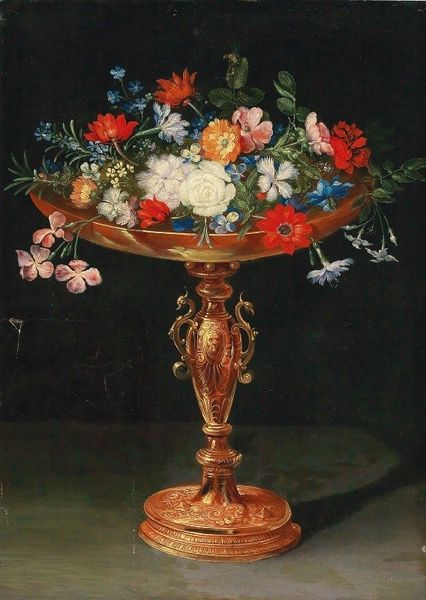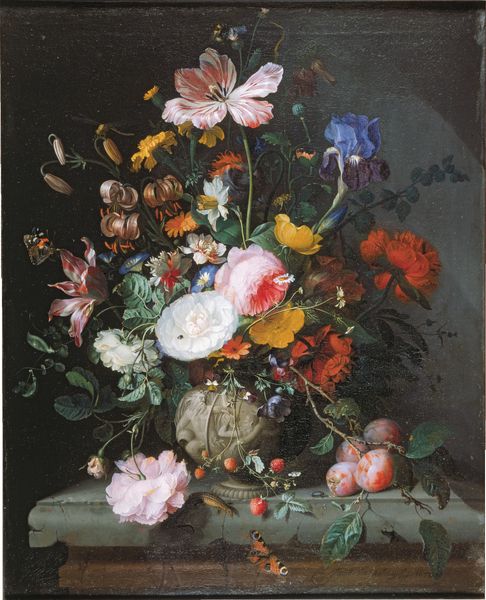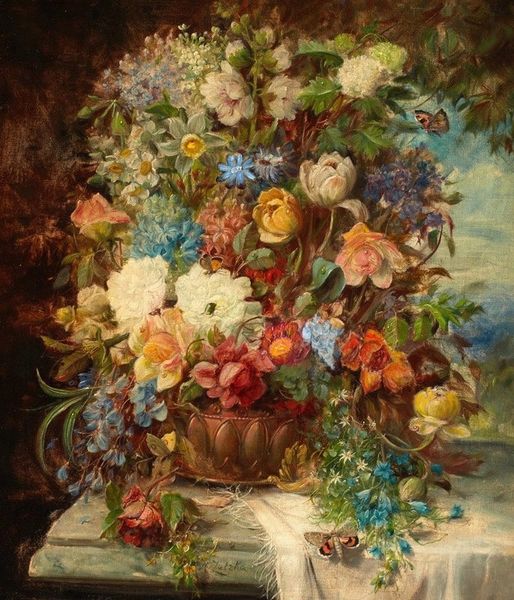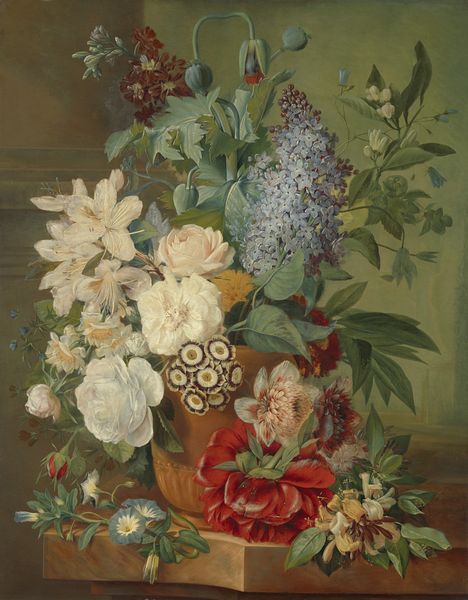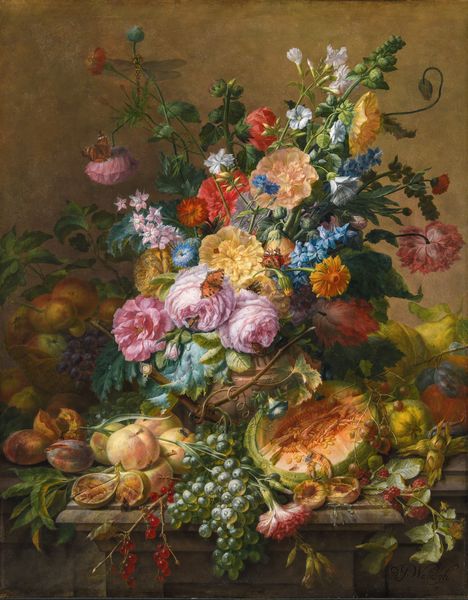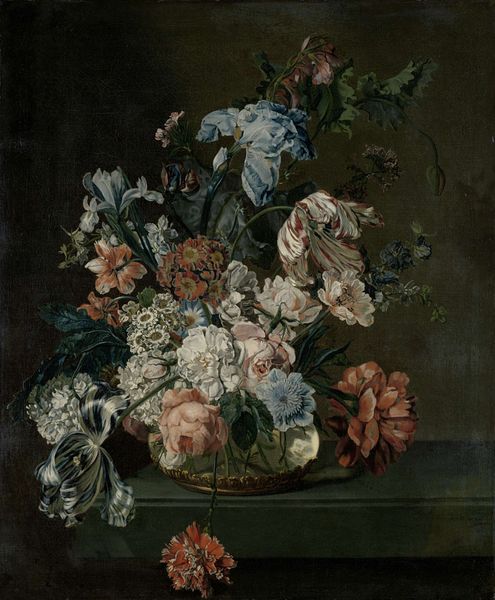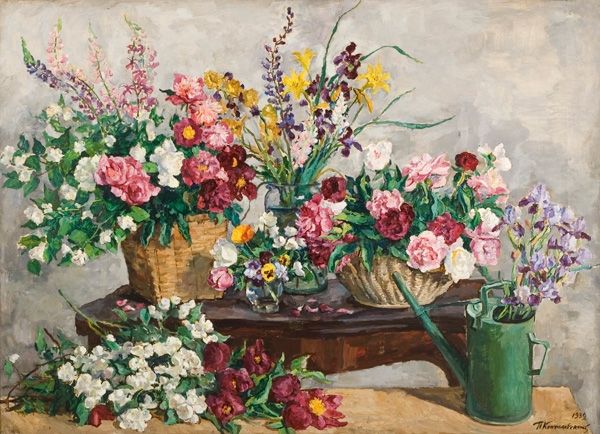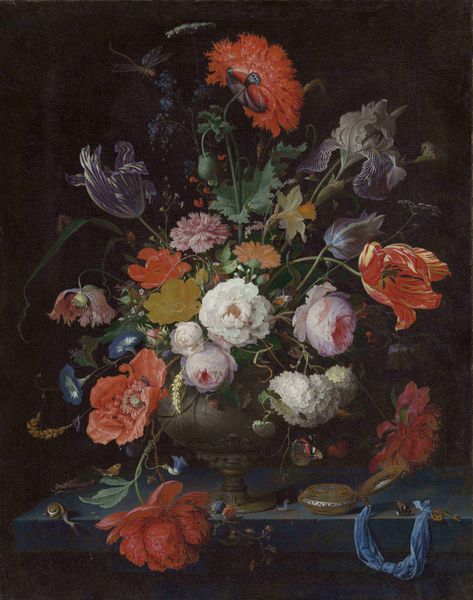
painting, oil-paint
#
gouache
#
baroque
#
dutch-golden-age
#
painting
#
oil-paint
#
landscape
#
oil painting
Copyright: Public Domain: Artvee
Curator: Here we have "A Basket with Spring Flowers on a Stone Table" attributed to Jan Brueghel the Younger, a piece executed with oil paint, evoking the Dutch Golden Age still life tradition. Editor: My immediate reaction is to the sheer abundance and controlled chaos. It's a cornucopia bursting forth, yet contained, somehow melancholic despite the riot of colors. Curator: Precisely. Notice the dramatic use of chiaroscuro, the strong contrast between light and dark, directing our gaze. Observe how the arrangement isn’t merely a collection of blooms, but a calculated interplay of forms, textures, and colors, creating a harmonious visual experience. Editor: Yes, and the containment itself feels loaded. Dutch Golden Age paintings often served to showcase wealth and the exotic. Was this abundance accessible to all? Or just a select few profiting from global trade and exploitation of resources, represented by these rare, imported flowers? Curator: That’s a compelling interpretation. I am interested in the symbolism: tulips, for example, were once luxury items symbolizing status. However, formally speaking, notice how the spiraling stems lead our eye through the entire canvas and keep all the varied color harmonies in tune with each other. Editor: I agree, but let’s not ignore how these paintings acted as documents of fleeting beauty, memento mori, subtly reminding the viewer of mortality and the impermanence of material possessions during a time of political upheaval and religious conflict. Did this abundance offer real comfort, or just a temporary distraction? Curator: These reflections enrich our engagement with this still life. It’s fascinating to analyze how formal choices contribute to, or perhaps even conceal, complex sociopolitical realities. Editor: Indeed. This piece makes you question whether beauty can ever be separated from power, a difficult proposition to resolve.
Comments
No comments
Be the first to comment and join the conversation on the ultimate creative platform.
